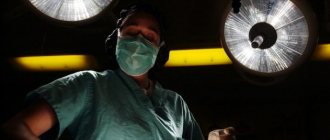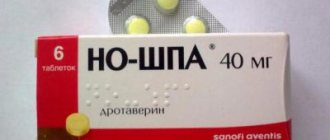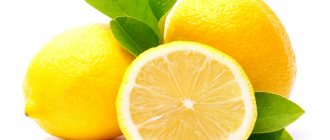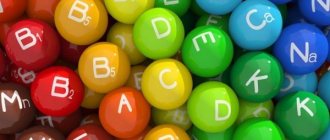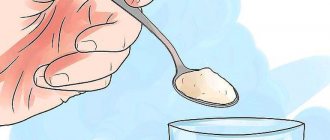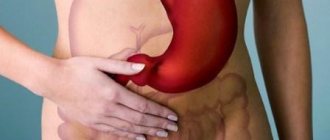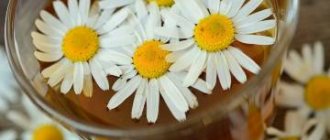Is it possible before the procedure or not?
The standard patient instructions say not to drink the night before the procedure.
This phrase can be misleading, because in this matter everything depends on what time of day the examination is scheduled for:
if gastroscopy will be performed in the first half of the day (from 7-00 to 12-00), then you can drink water for the last time only in the evening;- if gastroscopy is scheduled for the second half of the day (from 12-00 to 19-00), then it is allowed to drink a few sips of clean still drinking water in the morning.
The most important thing to remember is that you should not drink liquid immediately before examining the gastrointestinal tract.
What happens if you drink shortly before the stomach examination procedure?
Let's consider the possible consequences of non-compliance with the recommendations:
- Water restrictions This is primarily due to the fact that during the procedure, the subject’s natural gag reflex will be extremely increased.
Each person will have a different expression of the reflex - some have more, some have less. But if there is any filling in the stomach, even if it is ordinary water, then there is a high probability that all the contents of the stomach will come out.This will bring discomfort to the patient and the doctor, and will also significantly reduce the reliability of the study in terms of diagnostic information.
- It is also worth remembering about some laws of physics. Water has the property of light refraction, that is, distortion and change in the visibility of light rays in the field of view.
Therefore, drinking water immediately before examining the digestive tract may interfere with sufficient visibility for the endoscopic technique. As a result, the specialist may miss any pathology.
- Another nuance that confirms the need to limit the drinking regime before gastroscopy is related to the chemical properties of water.
The stomach contents have a low pH. The acidic environment is maintained due to the presence of hydrochloric acid in the gastric juice. Water, in turn, is neutral. When water is mixed with the natural contents of the stomach, the pH changes significantly. This may also prevent the doctor from making a correct diagnosis if pH testing is necessary during gastroscopy.
Additional recommendations
Conversation with a doctor
Be sure to warn your doctor about the following factors:
- Before inserting the probe, the doctor sometimes treats the mucous membrane of the larynx with a special anesthetic. The active substance of the anesthetic may vary. Therefore, you should warn the diagnostician about existing allergic reactions to one or another component.
- Before gastroscopy, it is necessary to tell the doctor about chronic diseases, despite the fact that concomitant diseases are not a contraindication for examination of the organ. If gastroscopy is performed with a biopsy, exacerbations and relapses may occur, depending on the type of disease.
- If a woman carrying a child is undergoing gastric endoscopy, the doctor should be warned about this, especially in the first months of pregnancy. In this case, the doctor selects safer anesthetics.
- Be sure to tell the specialist if you had a gastric biopsy or any surgical intervention less than a month ago. This factor can become a serious contraindication for gastroscopy, since after a biopsy the mucous membrane of the organ is very vulnerable, and the examination will harm the patient.
Examination of the stomach if you feel unwell
Sore throat, runny nose, cough and other cold symptoms are not a contraindication to endoscopic examination.
However, during gastroscopy, the patient feels insecure and constrained, and experiences fear. Debilitating symptoms of the disease can significantly worsen the situation
If you are not feeling well or even in a bad mood, experts advise postponing preparation for gastroscopy until you have fully recovered.
Moral preparation
When examining the stomach, mental preparation for manipulation is necessary. This is due to the fact that when the patient is in a calm state, the procedure is much faster and is considered more informative.
Worries about whether the examination is painful, whether the procedure can provoke vomiting, how to properly prepare for gastroscopy and other important aspects can put pressure on the patient’s psyche, which is why many refuse the examination. To set a person up, the doctor needs to tell him how gastric endoscopy is performed, why it is needed and what consequences are possible.
Those who have undergone this procedure claim that gastroscopy is absolutely painless. On average, the procedure lasts 5-20 minutes. To reduce the sensitivity of the root of the tongue, doctors in some cases use anesthetic agents. This is necessary to suppress the urge to vomit.
The main task of the specialist is to calm the patient. The patient's anxious state can lead to involuntary compression of the esophagus, and, as a result, to difficulties during the examination.
Don't be afraid and don't worry. FGDS, although unpleasant, is an absolutely painless study, which an experienced specialist does quickly and efficiently. Remember that this is the only way to examine the stomach and duodenum and not miss complications that threaten not only health, but also life!
How long before the examination is it impossible?
The last intake of water should be at least 6-8 hours before the time for which the gastroscopy procedure is scheduled.
It is strictly forbidden to drink the following drinks instead of water on the eve of the test:
- coffee;
- tea;
- cocoa;
- fresh and canned juices;
- carbonated drinks, including kvass;
- jelly.
It is advisable to exclude the above drinks from the patient’s diet 24 hours before the procedure. The same applies to ingesting alcoholic beverages.
Attention! Failure to comply with this rule can significantly distort the results of examinations and lead to an incorrect diagnosis.
Diet after FGDS
- Time frame: 3-4 days
- Cost of products: 300-500 rubles. per day
After gastroduodenoscopy, nutrition should be strictly adjusted. Patients after FGDS are prescribed diet No. 1. It is usually prescribed to patients with pathologies of the stomach and duodenum: gastritis, peptic ulcer, duodenitis.
Diet No. 1 provides for the consumption of foods that can be eaten after gastroscopy and for pathologies of the stomach and duodenum.
The diet has rules that must be followed:
- Steamed, boiled and baked dishes are allowed.
- Salt consumption is kept to a minimum.
- You need to eat in small portions - at least 5 meals.
- You need to eat from 1500 to 2800 calories per day.
The diet includes a number of prohibitions.
Prohibited
Mushrooms are irritating to the stomach
- margarine;
- strong fish and meat broths (except for chicken);
- sour foods;
- carbonated drinks;
- cabbage;
- cucumbers;
- alcohol;
- coffee, black tea;
- marinades;
- butter dough and all dishes prepared from it.
It is necessary to refuse baking
You cannot eat certain grains: millet, barley, pearl barley.
Many people after FGDS are interested in what they can eat after diagnosis. The list of permitted products includes:
- Soups. It is recommended to prepare them from pureed vegetables. It is best to cook soups using potato or carrot broth. You can eat milk soups with well-mashed cereals. These can be rice, oatmeal dishes, noodle soups. You are allowed to eat potato soup made with chicken broth.
- Bread. You are allowed to eat only yesterday's bread made from first-grade wheat flour. Other types of bread are prohibited.
- Bakery. After FGS, you are allowed to eat uneaten cookies, biscuits, pies with boiled meat, jam, and eggs. You can include cheesecakes with cottage cheese on the menu.
- Meat. Many people are interested in, is it possible to eat meat? Diet No. 1 includes chicken, rabbit, and turkey. Low-fat varieties of lamb and pork are allowed. Steam cutlets, meatballs, and zrazy are prepared from meat. You can eat a variety of dishes, but only from boiled meat.
Chicken can be eaten boiled
- Fish. Some time after diagnosis, it is allowed to introduce fish into the diet. It is best to cook steamed fish cutlets. It is also allowed to steam and boil fish.
- Dairy products. Diet No. 1 allows the consumption of dairy products. You can drink milk, kefir, yogurt. It is allowed to add a small amount of non-acidic cottage cheese and low-fat sour cream to the menu.
- Eggs. You are allowed to eat no more than two soft-boiled eggs per day. You are allowed to eat an omelet.
- Cereals. It is allowed to eat oatmeal, rice, and buckwheat. You can make porridge and soups from them. You can cook cereals in milk, water or chicken broth. You can make cutlets from cereals.
- Pasta. You can include small pasta in the menu.
- Vegetables. They are pureed or steamed. Vegetables allowed include potatoes, cauliflower, and zucchini. Tomatoes are allowed, but not more than one hundred grams per day and only non-sour varieties.
- Beverages. Some time after FGDS you can drink water. After three hours, it is allowed to introduce weak tea, cream, weak cocoa, juices, and rosehip decoction into the diet.
- Oils and other fats. You can add vegetable oils and warm butter to dishes. Other fats are excluded.
Diet No. 1 is prescribed not only for pathologies of the stomach and duodenum. It is necessary to eat gentle foods after FGDS, for various diseases of the esophagus.
We invite you to familiarize yourself with Terzhinan interaction with alcohol
After FGDS, the doctor determines how long the patient can eat and how long he will have to follow the diet. The doctor must explain what foods you can eat and what menu you should have while following the diet.
Table No. 1 has a number of features:
- The duration of the diet is determined by the doctor. Usually after FGDS, the diet lasts about two weeks. If tissue was taken for biopsy during the procedure, the period can last up to a month, but this is in rare cases.
- Portions should be moderate. If you eat large portions, this will cause even more irritation to the stomach and duodenum.
- Meals should be fractional. The daily diet is divided into 5-7 meals. The last meal should be no later than eight o'clock in the evening (three hours before bedtime).
- There are certain requirements for food temperature. All dishes must be warm. You cannot eat cold or hot food; food should be moderately warm.
- Patients must stay hydrated. You need to drink at least one and a half liters of water per day.
It is recommended to drink still water
If the patient eats heavy food, he may experience pain. To prevent this from happening, you must strictly follow all the doctor’s recommendations. And the first thing to start with is to observe the time from which you are allowed to eat. The doctor should explain how long after the patient can eat.
When following a diet, especially if a biopsy examination was performed, it is necessary to carefully monitor what the patient or patient ate, as well as the temperature of food and drinks. The menu should contain only boiled, steamed, pureed products. Some dishes can be eaten baked.
When wondering when you can eat after gastroscopy, many people think that they can eat as soon as they leave the doctor’s office. But in reality it's not like that. Eating is allowed no earlier than an hour after the procedure. In some cases, the doctor may allow you to eat earlier. If some complications arise during the insertion of the endoscope, the doctor strictly selects a menu for each day.
Based on the diagnostic results, the doctor determines for what period of time diet No. 1 should be followed. It can last two weeks, and in some cases patients are forced to follow nutritional therapy for several months.
How to use it correctly if you are thirsty?
The best solution is to take care of your diet in advance. 24 hours before the upcoming gastroscopy, it is necessary to exclude from the list of foods consumed:
- overly salty,
- sweet,
- spicy food.
Products with these properties can shift the water-salt balance in the body, which makes you want to drink much more than usual.
If there is still a lot of time before the procedure, you can no longer drink according to the recommendations, but you really want to, then the following advice will help:
- take water into your mouth;
- hold it in the mouth;
- without swallowing, spit it out.
Only clean, non-carbonated water is suitable for this procedure, since even if drops accidentally enter the stomach, there will be no particular harm to the procedure.
Important! This simple trick will slightly quench your thirst, but will not interfere with the subsequent gastroscopy procedure. This technique can be repeated several times, but carefully.
